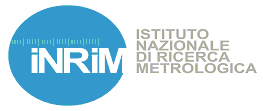Metrology on a cellular scale - project partners
- National Physical Laboratory, (NPL, UK)
 NPL provides expertise and facilities to the project in biomaterials and biocompatibility characterisation; chemical and surface analysis by mass spectroscopy and single molecule fluorescence and optical coherence tomography. The scientific team have a strong links to UK and international collaborative and standards bodies, such as ASTM, ISO and VAMAS.
NPL provides expertise and facilities to the project in biomaterials and biocompatibility characterisation; chemical and surface analysis by mass spectroscopy and single molecule fluorescence and optical coherence tomography. The scientific team have a strong links to UK and international collaborative and standards bodies, such as ASTM, ISO and VAMAS. - Physikalisch-Technische Bundesanstalt (PTB, Germany)
 has unique facilities and competencies in the required fields of tissue engineering. Designated excellence in: micro- and macroscopic imaging of cells and tissue, including modelling and data analysis; state-of-the-art laser flow cytometry for characterisation, counting, and sorting of cells.
has unique facilities and competencies in the required fields of tissue engineering. Designated excellence in: micro- and macroscopic imaging of cells and tissue, including modelling and data analysis; state-of-the-art laser flow cytometry for characterisation, counting, and sorting of cells. - Istituto Nazionale di Ricerca Metrologica (INRIM, Italy)
 INRIM has a long experience in the broad field of competencies needed for its participation in the present project. The group involved in the project, a team of 10 persons, is an interdisciplinary group with competencies in, laser and fluorescence spectroscopy of molecules and nanoparticles, chemistry, electronics, nanotechnology, thermometry, high intensity ultrasounds. Recently in cellular biology and imaging techniques.The INRIM has a recognized expertises in high resolution laser spectroscopy, laser stabilization techniques, frequency measurements in the infrared using femtocomb techniques.
INRIM has a long experience in the broad field of competencies needed for its participation in the present project. The group involved in the project, a team of 10 persons, is an interdisciplinary group with competencies in, laser and fluorescence spectroscopy of molecules and nanoparticles, chemistry, electronics, nanotechnology, thermometry, high intensity ultrasounds. Recently in cellular biology and imaging techniques.The INRIM has a recognized expertises in high resolution laser spectroscopy, laser stabilization techniques, frequency measurements in the infrared using femtocomb techniques. - Laboratory of the Government Chemist (LGC, UK)
 LGC has a dedicated cell biology facility and has been involved with the tissue engineering/regenerative medicine field for a number of years, having managed a range of projects which have looked to address metrology issues based around stem cell manufacture, stem cell biomarker expression, genetic stability in human embryonic stem cells and tissue engineered product control. LGC also co-authored a recent British Standards Institute funded publication which specifically addressed codes of practice for the procedure involved in cell based therapies (PAS-83). LGC also houses a state of the art mass spectrometry facility. It includes a wide range of MS analysers, including time of flight, quadrupole, Paul ion trap and Fourier transform ion cyclotron resonance, combined with a range of ionisation sources (MALDI, electrospray, EI). These are routinely applied for the analysis of both intact proteins as well as small molecule identification. Recently the group has expanded into the area of surface analysis using soft ionisation techniques such as desorption electrospray and imaging MADLI. The group has designed and manufactured a bespoke DESI source and this will be further improved to enable imaging capabilities. The groups expertise lies in advanced problem solving using mass spectrometry, including the provision of quantitative and qualitative information.
LGC has a dedicated cell biology facility and has been involved with the tissue engineering/regenerative medicine field for a number of years, having managed a range of projects which have looked to address metrology issues based around stem cell manufacture, stem cell biomarker expression, genetic stability in human embryonic stem cells and tissue engineered product control. LGC also co-authored a recent British Standards Institute funded publication which specifically addressed codes of practice for the procedure involved in cell based therapies (PAS-83). LGC also houses a state of the art mass spectrometry facility. It includes a wide range of MS analysers, including time of flight, quadrupole, Paul ion trap and Fourier transform ion cyclotron resonance, combined with a range of ionisation sources (MALDI, electrospray, EI). These are routinely applied for the analysis of both intact proteins as well as small molecule identification. Recently the group has expanded into the area of surface analysis using soft ionisation techniques such as desorption electrospray and imaging MADLI. The group has designed and manufactured a bespoke DESI source and this will be further improved to enable imaging capabilities. The groups expertise lies in advanced problem solving using mass spectrometry, including the provision of quantitative and qualitative information.
